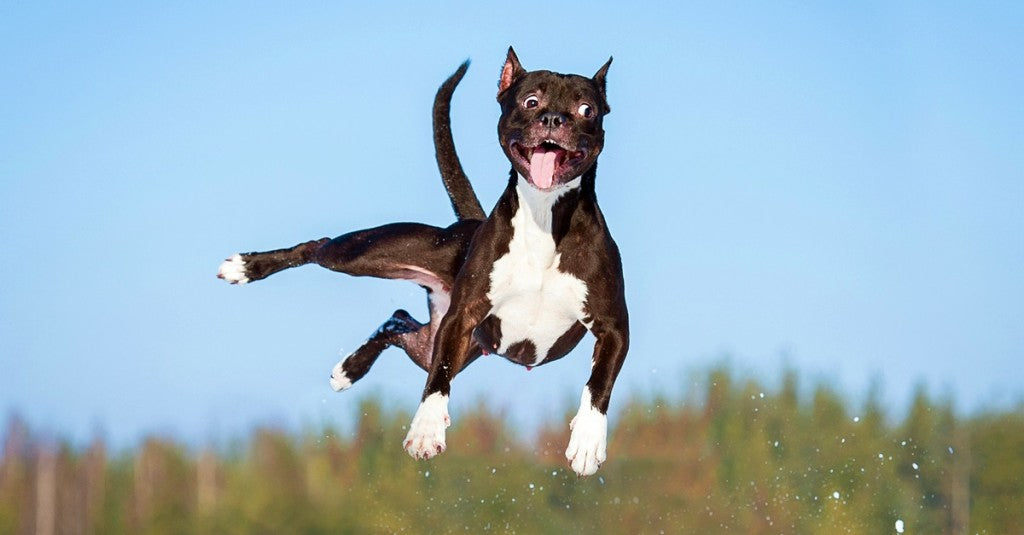Yes all dogs have feelings! Just like humans they too use emotions to express a certain state of bliss or hurt, disgust or love. Scientific research has come to support that dogs have the ability to show some real emotions. For this purpose an understanding of Human sentiments is required. The recent investigations have fairly come to associate the workings of human brain to that of the dogs and have found the same structural network in the brain of the two species.
Image: The Dog Planet
Emotional situations are marked by the release of same hormones in both dogs and human beings. Positive experiences trigger the human brain to secrete feel good hormones; it’s interesting to note that the same oxytocin & endorphin rush is felt in dogs in times of comfortable & rewarding points in time.
A nervous system make-up similar to that of humans, it is not wrong to say dogs have emotions although their ability to express the complex ones is limited. Humans too aren’t born with a complete range of sentiments extending all the way to the complex ones. A two year old infant neither shows nor understands emotions such as shame or guilt but gradually learns about these over the next few months or years.
A Dog’s brain and its ability to express emotions are comparable to that of a two and a half years old human infant.
Mind of a dog develops fully by the age of four to six months depending upon the breed type and this means that by this age the canine’s brain is equipped with all the emotions it will ever have. And this collection of emotions and feelings is same as that a two and a half years old child can process. This clearly shows that the basic range of emotions of excitement, distress, contentment, disgust, fear, anger, joy, shyness and love will be experienced by the canine.
Good News for dog lovers, your pet will respond to you through emotions you understand!
- Excitement and Joy: A free spirited play activity is the harbinger of Joy in dogs. As per the observations of Charles Darwin a noted English naturalist and geologist, dogs jump about and bark to express joy while anticipating a pleasurable experience. Furthering the talks on play, researcher from Sierra Nevada College named Patricia Simonet found out a significant pattern of breathing in dogs during play that sounded like a giggle. The excitement and activity gave rise to heavy breathing and these exhalations were then compared to being the canine’s way of laughing. The research involved the use of a special microphone to tape the sounds made by dogs indulging in play known as the parabolic microphone. This exhalation was noted to be quite different than usual breathing/expiration of air.
- Jealousy: All those interacting with dogs may be surprised at this finding, but the reality is that they do feel jealous and may teach you a lesson or two in fairness. Researcher Friederike Range from the University of Vienna in Austria along with her team began an experiment on some dogs that already understood the command shake and responded by offering their paw, whether a treat was given to them or not. However as the experiment progressed and some dogs received the reward while others in the same group did not, the latter stopped the behavior/obeying the command upon seeing the unfairness.
- Distress/sorrow/pain: A dog will definitely be affected by the loss of anyone who is part of its human family pack, however not in the same way as human beings grieve. Also the demise of a fellow pet will be mourned by the dog. A grieving pooch may lose its desire to eat, could show signs of depression or fear, and might over sleep or sleep very little. A study conducted on the subject highlighted that the brokenhearted dog could take anywhere between two weeks to six months to return to normalcy. As they say, time is a great healer. Although a visit to the vet may become necessary incase these signs direct to an illness being present in the pet.
Dogs can’t wrap their brains around complex emotions namely shame, pride, guilt and contempt. These sentiments do require some level of learning, and even in human kids these social emotions appear gradually, some developing at the ages of 4 or 5 years. A dog parent may confuse the emotion of fear in their pet with guilt or shame. When your house-broken dog, poops inappropriately indoors, it may appear uneasy after doing its business. This discomfort in the dog is due to the fear of being punished by its master. There is no guilt involved, but the dog associates its wrong doing with some past punishment meted out to it.
Article Resource:
www.cesarsway.com
https://www.psychologytoday.com


